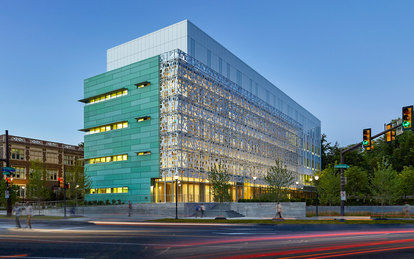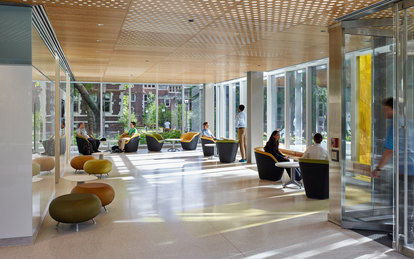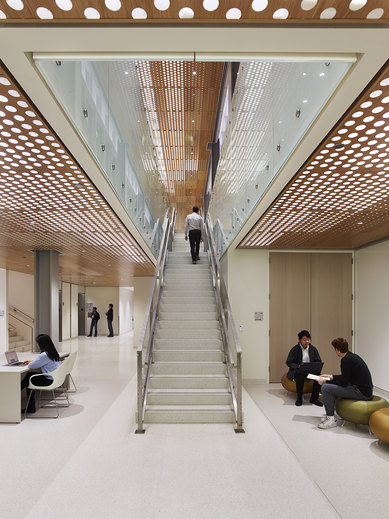Stephen A. Levin Neural & Behavioral Sciences Building
The University of Pennsylvania consolidates its life sciences programs into a state-of-the-art facility that sits at the head of a new campus quad, creating the University’s newest section of campus, and setting the stage for an integrated, connected and exploratory life-sciences precinct.
Client
University of Pennsylvania
Location
Philadelphia, Pennsylvania
Markets/Services
Higher Education, Lighting Design, MEP Engineering, Science & Technology, Structural Engineering
Size
78,000 SF
Featured Awards
Architectural Lighting (AL), Whole Building Award, 2017
American Institute of Architects (AIA) / Committee on Architecture for Education (CAE), Educational Facility Design Award - Award of Merit, 2017
American Institute of Architects (AIA) -- Northern Virginia Chapter, Award of Merit - Institutional Architecture, 2017
Illuminating Engineering Society (IES) -- Detroit Section, Illumination Awards - Section Award, 2017
Illuminating Engineering Society (IES) -- Illumination Award of Merit, 2017
American Institute of Architects (AIA) -- Detroit Chapter, Honor Award - Building, 2017
American Institute of Architects (AIA) -- Potomac Valley Chapter, Design Awards, 2016
American Institute of Architects (AIA) -- DC Chapter, Chapter Award, 2016
General Building Contractors Association (GBCA), Construction Excellence Award - Best Educational Institutional Project, 2016
Special Jury Citation from the Virginia Society AIA, 2009
The University of Pennsylvania was expanding their research capacity of genes, the brain, and behavior- three areas of study that are closely linked. But these inextricable connections between the life sciences were in no way reflected in the university’s arrangement of dispersed buildings, as students lacked the ability to coalesce with their academic neighbors.
Influenced by a new model of teaching, the university decided to bring together its psychology, biology, and behavioral sciences programs into a common facility. Our team designed the master planning, programming, and design for this state-of-the-art integrated science building, as an iconic connector for a newly-defined life sciences precinct.
This building is a great example of good urban and campus design integrating form and function.
David Hollenberg, University Architect, University of Pennsylvania
Our team’s design rotated the building 90 degrees which opened a green area to the south, creating a recognizable quad and defining a new sense of place on campus. The master plan and program’s ability to link the two provide a smooth transition between the academic environment and the community. A below-grade auditorium extends south with a green roof, creating a generous connection to a revered campus botanical garden, allowing for future expansion while also activating a pedestrian plaza.
The interior of the building required a carefully controlled environment for the labs a luminous glass volume with an aluminum sunscreen for collaboration and circulation for students provides soft, yet expansive light throughout the day. This feat was particularly challenging because of the building’s southern exposure and the subsequent solar glow it is exposed to. An intricately designed scrim solved this, butting the solar heat gain by half through.

The design required that the sunscreen be visible at daytime as well as at night. To maintain the screen’s character our lighting design team strategically looked inside of the building to create a consistent back-light. Our team changed the structural configuration of the scrim to provide a second source of brightness to match the existing glow.
The distinctive biomorphic sunscreen highlights how a singular building element can heighten the user experience. SmithGroup designed the sunscreen to play with light and shadow continuously transforming how the building is perceived throughout the day.
The Stephen A. Levin Building doesn’t just unify University of Pennsylvania’s life sciences programs, it creates an opportunity for students to learn from one another in ways that hadn’t before been possible.





